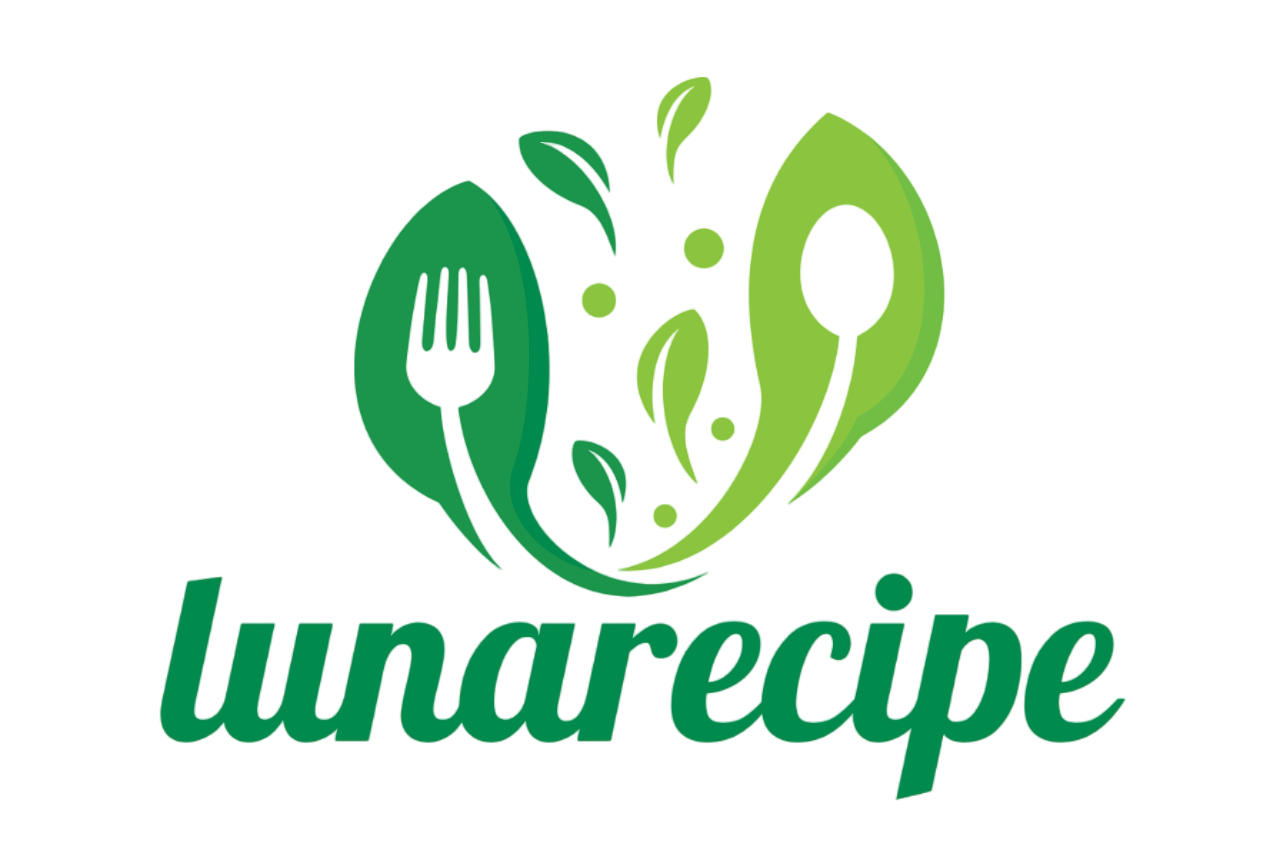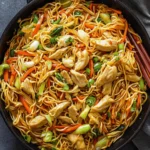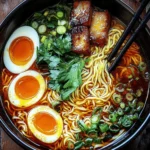The Vegetable Paella is a feast for both the eyes and the palate, with its stunning array of colorful vegetables and rich saffron-infused rice. The dish offers the perfect balance of fresh, roasted, and sautéed flavors, making every bite delightful.
This recipe is not only easy to make but also incredibly versatile. You can swap in different vegetables based on what’s in season or what you have on hand. The inclusion of peas adds a burst of sweetness, while the saffron gives the rice its characteristic golden hue and subtle floral flavor. It’s an ideal dish for weeknight dinners, but also impressive enough to serve at a gathering or dinner party.
Full Recipe:
-
1 tablespoon olive oil
-
1 onion, chopped
-
2 cloves garlic, minced
-
1 red bell pepper, diced
-
1 yellow bell pepper, diced
-
1 zucchini, sliced
-
1 cup cherry tomatoes, halved
-
1 1/2 cups Arborio rice (or paella rice)
-
1/2 teaspoon saffron threads, soaked in warm water
-
3 cups vegetable broth
-
1 teaspoon paprika
-
1/2 teaspoon turmeric
-
Salt and pepper to taste
-
1 cup frozen peas
-
1/4 cup fresh parsley, chopped
-
Lemon wedges for serving
Directions:
-
Heat olive oil in a large pan or paella pan over medium heat. Add onion and garlic, cooking until softened, about 3 minutes.
-
Add the diced bell peppers and zucchini, and cook for another 5 minutes, stirring occasionally.
-
Stir in the cherry tomatoes and cook for 2 minutes until softened.
-
Add the rice, saffron (with water), paprika, turmeric, salt, and pepper. Stir well to combine and toast the rice for 2 minutes.
-
Pour in the vegetable broth and bring to a boil. Reduce the heat to low, cover, and let simmer for 20 minutes or until the rice is cooked and liquid is absorbed.
-
Stir in frozen peas and cook for another 5 minutes, covered.
-
Remove from heat and let rest for 5 minutes before serving.
-
Garnish with fresh parsley and serve with lemon wedges.
Prep Time: 10 minutes | Cooking Time: 30 minutes | Total Time: 40 minutes
Kcal: 320 kcal | Servings: 4 servings
History and Origin
The origins of paella trace back to the Valencia region of Spain, where it was first created as a humble peasant dish. Traditionally, paella was made using rice, vegetables, and whatever local proteins—such as rabbit, chicken, or seafood—were available. It was cooked in a wide, shallow pan over an open flame, a practice that allowed the rice to achieve the perfect texture and flavor. The name “paella” actually refers to the pan in which the dish is cooked, rather than the dish itself.
In the 19th century, paella became a symbol of communal eating, with families gathering around the large pan to enjoy this hearty meal. Over time, the dish evolved, incorporating regional variations. While seafood paella became more common on Spain’s coastlines, the vegetable version (known as “paella de verduras”) became popular as a meat-free alternative. Vegetable Paella is now a staple of Spanish cuisine, often enjoyed during festivals or family meals, especially during the fall months when vegetables are abundant.
Though paella’s roots are deeply embedded in Spanish tradition, its popularity has grown internationally. Today, it’s a beloved dish around the world, with home cooks and professional chefs alike experimenting with unique ingredients and methods to create their own versions of the dish. The global appeal of paella lies in its versatility, allowing it to cater to a variety of dietary preferences, including vegetarian and vegan options.
Variations and Adaptations
One of the great beauties of Vegetable Paella is its adaptability. Across Spain and around the world, the dish is made in many different ways, depending on the region and the ingredients available. In Valencia, the original home of paella, the dish traditionally includes a mix of locally grown vegetables like artichokes, tomatoes, and beans. In other parts of Spain, vegetables like bell peppers, peas, and zucchini are commonly added.
Outside of Spain, chefs and home cooks have put their own spin on Vegetable Paella by incorporating ingredients from their local cuisines. For instance, some variations feature ingredients like peas, mushrooms, and spinach, while others might include a sprinkle of cheese or a drizzle of olive oil for added richness. In some recipes, you’ll find the use of different grains such as quinoa or barley in place of traditional paella rice, giving the dish a unique texture and flavor profile.
For those following a vegan or plant-based diet, Vegetable Paella can easily be made without any animal products. Simply omit any seafood or meat and use vegetable broth instead of chicken or beef broth. Some cooks also like to add plant-based protein, such as tofu or tempeh, to give the dish an extra dose of nutrition.
While saffron is traditionally used to give the rice its golden hue and floral flavor, some cooks opt for turmeric as a more affordable alternative. The resulting dish will have a similar vibrant color, but with a slightly different flavor profile. Similarly, paprika and other spices can be adjusted to suit individual preferences, adding a mild smoky flavor or a bit of heat depending on the variety used.
Nutritional Information
Vegetable Paella is a nutrient-packed dish that combines wholesome vegetables, rice, and spices. The nutritional content will vary based on the specific vegetables and broth used, but a typical serving of this dish contains a balanced mix of macronutrients, vitamins, and minerals.
A single serving of Vegetable Paella typically provides around 300-350 calories, depending on the proportions of oil and vegetables. The dish is low in fat, especially if olive oil is used in moderation, and is a good source of fiber, thanks to the inclusion of vegetables like bell peppers, zucchini, and peas. The rice provides a moderate amount of carbohydrates, which makes the dish filling without being overly heavy.
In terms of protein, Vegetable Paella contains a modest amount, primarily from the rice and peas. For those looking to increase their protein intake, adding plant-based protein sources like tofu, chickpeas, or tempeh can make the dish even more satisfying. The spices used in paella—such as saffron and paprika—also offer some health benefits, including anti-inflammatory and antioxidant properties.
In terms of micronutrients, this dish is a great source of vitamin C, especially when using peppers, tomatoes, and peas. The dish also provides potassium, which is essential for heart health, as well as folate, which supports cell growth and metabolism. Additionally, saffron is rich in antioxidants and has been linked to improved mood and cognitive function.
Serving Suggestions and Pairings
Vegetable Paella is a versatile dish that can be served on its own or paired with a variety of sides and drinks to create a well-rounded meal. It’s perfect as a main course for a vegetarian or vegan dinner, but it can also be served as a side dish alongside grilled meats, seafood, or a hearty salad.
If you’re serving Vegetable Paella as a main dish, consider pairing it with a light salad of mixed greens dressed with olive oil, lemon, and a touch of balsamic vinegar. The freshness of the salad complements the rich, savory flavors of the paella, creating a satisfying meal.
For drinks, a chilled glass of white wine, such as a crisp Sauvignon Blanc or a light Spanish Albariño, makes a wonderful accompaniment to the dish. If you prefer something non-alcoholic, a sparkling water with a twist of lemon or a refreshing iced tea would also pair nicely.
Vegetable Paella can also be served with a side of crusty bread to soak up the flavorful rice, or perhaps a dollop of homemade aioli or a drizzle of olive oil for extra richness.
Tips and Tricks for Success
To ensure your Vegetable Paella turns out perfectly every time, here are a few expert tips to keep in mind:
-
Use a wide, shallow pan – Traditional paella is cooked in a wide, shallow pan that allows the rice to cook evenly and absorb all the flavors. If you don’t have a paella pan, use a large skillet or frying pan to achieve similar results.
-
Don’t stir the rice once it’s added – One of the key techniques for making paella is allowing the rice to cook undisturbed. Stirring the rice during cooking can result in a mushy texture. Let the rice cook in the broth until it’s tender and the liquid is absorbed.
-
Use quality broth – The flavor of the broth is crucial to the overall taste of the dish. Use vegetable broth that is rich and well-seasoned for the best results. You can also enhance the flavor by adding herbs like thyme or bay leaves to the broth as it simmers.
-
Saffron is essential – If you can, invest in high-quality saffron for a truly authentic paella. While saffron is expensive, a little goes a long way in providing that signature golden color and unique flavor. If saffron is unavailable, turmeric can be used as a substitute, though the flavor will be different.
-
Let the paella rest – After removing the paella from the heat, let it rest for about 5-10 minutes before serving. This helps the flavors meld together and allows the rice to finish cooking.
Potential Health Benefits
In addition to being delicious, Vegetable Paella offers several potential health benefits, thanks to its combination of wholesome ingredients. The vegetables provide an array of vitamins, minerals, and antioxidants, including vitamins A and C, which are important for immune function and skin health.
Advertisement
The inclusion of rice provides a source of energy in the form of carbohydrates, while the peas and other vegetables contribute to the dish’s fiber content, aiding digestion and promoting satiety. The use of olive oil adds healthy monounsaturated fats, which are known for supporting heart health and reducing inflammation.
The saffron in the dish not only gives it a unique flavor but also provides antioxidant properties that can help reduce oxidative stress in the body. Some studies have even suggested that saffron may have mood-boosting benefits, making this dish not only good for the body but also the mind.
Conclusion
Vegetable Paella is a dish that’s as delightful to the senses as it is nourishing to the body. Its combination of vibrant vegetables, aromatic spices, and tender rice makes it a satisfying and versatile meal for any occasion. Whether you’re looking for a comforting vegetarian dinner, a dish to impress your guests, or a meal that’s both healthy and delicious, Vegetable Paella fits the bill. Its global appeal and endless variations mean that you can adapt it to your tastes and dietary preferences. So why not give this flavorful dish a try and experience the joy of paella in your own kitchen?





